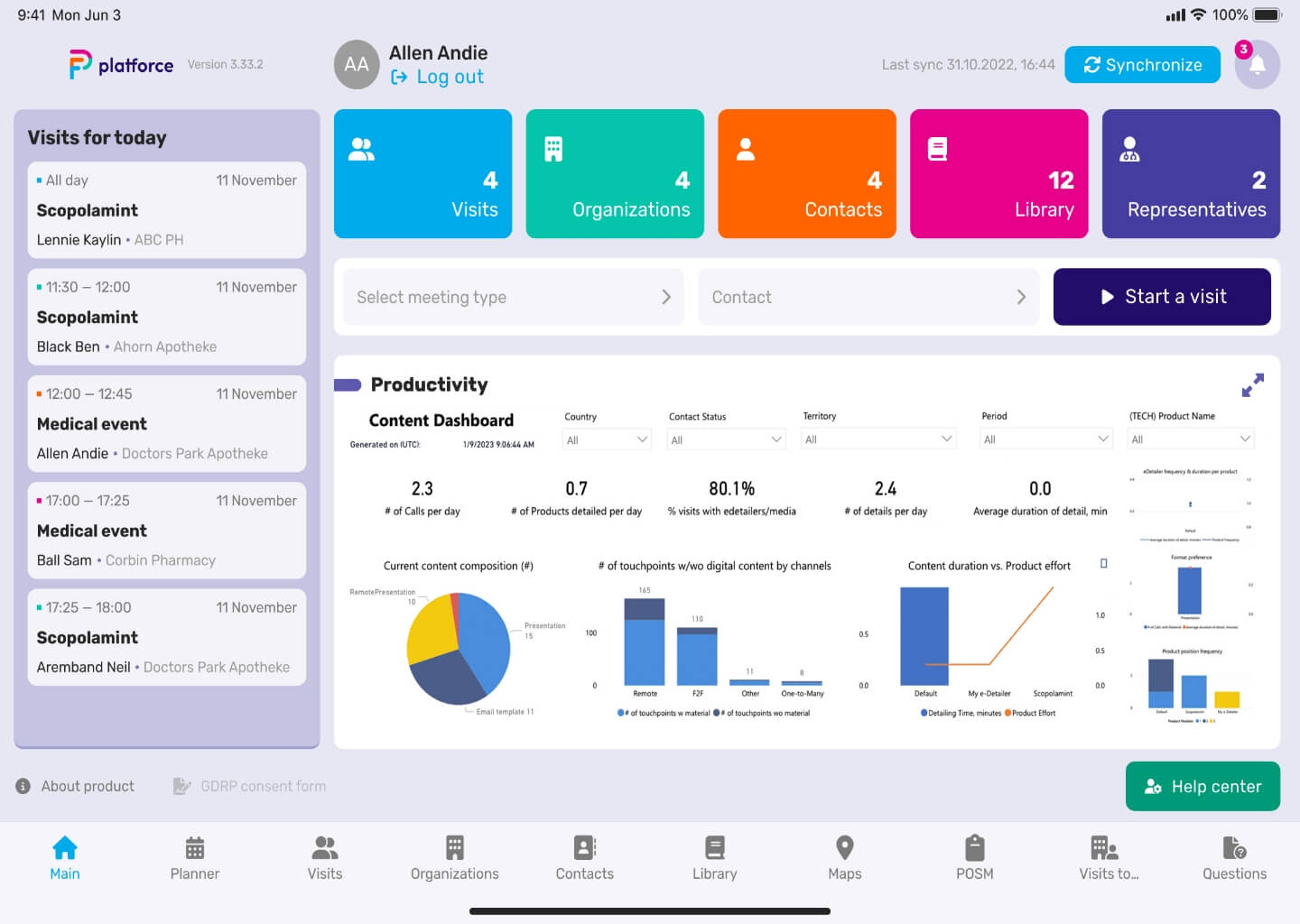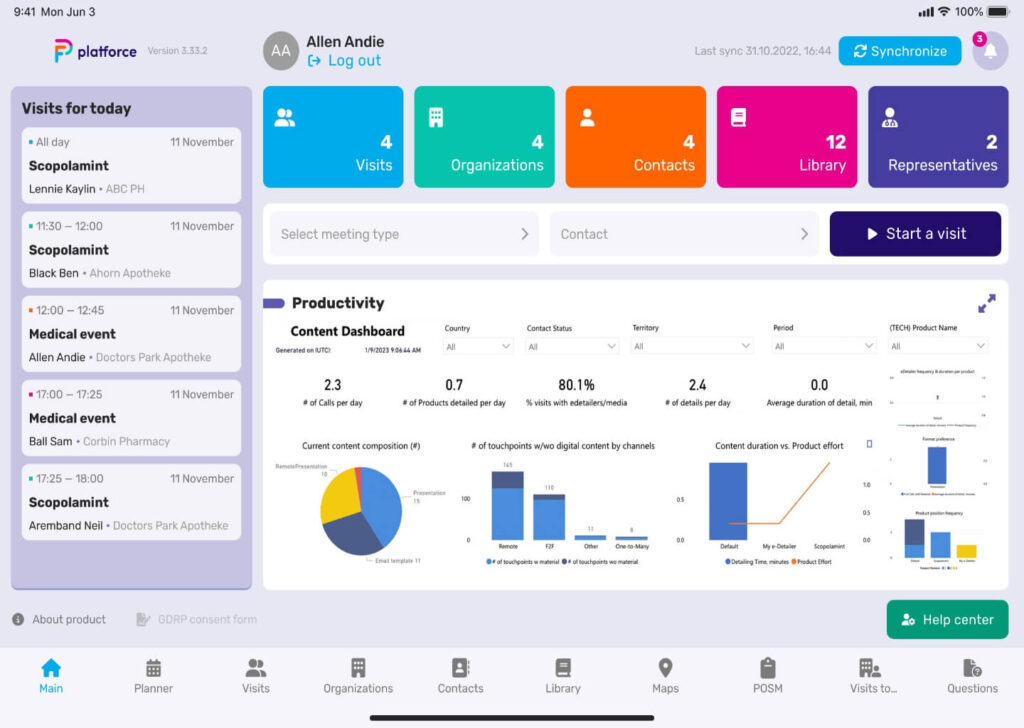Are you looking for a way to streamline your marketing efforts and provide a seamless experience for your customers across all channels? Look no further than the omnichannel marketing cloud. This innovative technology allows you to integrate all of your marketing channels, including email, social media, mobile, and web, into one system on a single platform.
With an omnichannel marketing cloud, you can achieve genuine omni-channel engagement, providing your customers with a consistent experience no matter how they interact with your brand. By using a single platform to manage all of your customer interactions, you can better understand your customers’ preferences and behaviors. Use that information to deliver targeted, personalized messaging that resonates with them.
In addition to providing a more seamless experience for your customers, an omnichannel marketing cloud can help you improve your omnichannel CRM efforts. By centralizing all of your customer data in one place, on one platform, you can gain a more complete view of each customer and their interactions with your brand. This allows you to better understand their needs and preferences and tailor your messaging and offers accordingly.
Omnichannel Strategy Development
Developing an effective omnichannel strategy is essential for businesses that want to engage their customers across multiple channels. A clear plan will help you deliver a seamless customer experience and increase customer satisfaction and loyalty. This section will explore some critical steps to developing an omnichannel strategy that works for your business.
Defining Omnichannel Customer Engagement
Omnichannel customer engagement means delivering a consistent experience across all channels, including email, social media, mobile, and in-store. This requires a deep understanding of your customer’s preferences and behaviors and a comprehensive view of their interactions with your brand. By leveraging integrated CRM platforms and other data sources, you can create a 360-degree view of your customers and develop targeted campaigns that resonate with their needs and interests.
Developing a Clear Omnichannel Strategy
You must define your goals and objectives to develop a clear omnichannel strategy. This includes identifying the most important channels to your customers and aligning your messaging and content accordingly. You also need to establish metrics to measure the success of a single channel of your campaigns and ensure that your whole marketing team is aligned around your goals.
Another key element of an effective omnichannel strategy is the ability to adapt to changing customer needs and preferences. This requires ongoing monitoring and analysis of customer data and the ability to adjust your campaigns and messaging as needed quickly.
Universal Customer Data Platform
To support your omnichannel customer service strategy, you need a universal customer data platform that can integrate data from all your channels and provide a single view of your customers. This platform should support real-time data processing and analysis and the ability to segment and target customers based on their behaviors and preferences across different channels.
By using customer churn, developing an effective omnichannel strategy and leveraging a universal customer data platform, you can create a seamless customer experience that drives engagement and loyalty among loyal customers. With the right tools and approach, you can build a strong foundation for effective omnichannel operations and drive long-term growth for your business.
Omnichannel CRM Benefits
As businesses expand their reach across multiple channels, it becomes increasingly important to have a comprehensive customer relationship management (CRM) solution to manage interactions across all channels. An omnichannel marketing cloud can provide various benefits for businesses looking to improve their sales processes and enhance rep onboarding time.
Improving Sales Process
An omnichannel CRM can help improve sales by providing a unified view of customer data across all channels. This allows sales reps to understand better each customer’s preferences, behaviors, and purchase history, enabling them to tailor their approach and increase the chances of a successful sale. An omnichannel CRM can also automate certain sales processes, such as lead scoring and lead nurturing, freeing up reps to focus on more high-touch activities.
Enhancing Rep Onboarding Time
An omnichannel CRM platform allows new sales reps to be onboarded more quickly and effectively. The system can provide them with a comprehensive view of customer data, training materials, and best practices in one place. This can help new reps get up to speed more quickly, allowing them to contribute to the team’s success sooner.
Overall, an omnichannel CRM can benefit businesses looking to have customer service teams improve their sales processes and enhance rep onboarding time. By providing a unified view of customer data across all channels, businesses can better understand their customers and tailor their approach to increase sales. Additionally, an omnichannel CRM can help new reps get up to speed more quickly, allowing them to start contributing to the team’s success sooner.
Creating Seamless Customer Experiences
To succeed in today’s competitive business environment, providing customers with a seamless experience across all channels is essential. Omnichannel marketing cloud enables you to do just that by integrating all your customer touchpoints into a single platform.
Mapping the Customer Journey
One of the key benefits of an omnichannel marketing cloud is the ability to map the customer journey. By understanding the customer’s journey, you can identify pain points and opportunities to improve the customer experience. With an omnichannel marketing cloud, you can track customer interactions across all touchpoints, including social media, email, and mobile devices, and use this data to create a personalized experience for each customer.
Native Multichannel Communication
Another advantage of the omnichannel marketing cloud is communicating with customers across multiple channels. With native multichannel communication, you can reach customers where they are, whether it’s through email, phone calls, SMS, social media, or push notifications. This ensures that your message is delivered to the right person, at the right time, and on the right channel.
It’s essential to have a clear strategy to maximize omnichannel engagement. This strategy should be based on a deep understanding of your customers’ needs and preferences and should be designed to provide a seamless experience across all channels. By leveraging the power of the omnichannel marketing cloud, you can create a truly customer-centric business that delivers value at every touchpoint and customer lifecycle.
Optimizing Omnichannel Sales Platforms
When it comes to effective omnichannel operations, optimizing your sales platforms is crucial. This means choosing the right platform for your business and utilizing it to its fullest potential. In this section, we’ll explore some of the key points and considerations for optimizing your omnichannel sales platforms.
Deciding on the Best Platform
Choosing the right platform for your business is the first step in optimizing your omnichannel sales strategy. Many options are available, from all-in-one marketing clouds to specialized point solutions. When deciding on the best platform for your business, consider factors such as:
Your business size and budget
The channels you want to sell on
The level of customization and integration you require
The level of support and training you need
By carefully weighing these factors, you can choose a platform that meets your specific needs and helps you achieve your omnichannel sales goals.
Cross-Channel Interaction History
To optimize your omnichannel sales strategy, you must have a complete view of your customer’s interactions across all channels. This means tracking and analyzing data from your website, social media, email, and physical stores. Doing so lets you gain valuable insights into customer behavior and preferences and use this information to personalize your marketing efforts.
One way to track cross-channel interaction history is through the use of a customer data platform (CDP). A CDP can collect and unify data from multiple sources, allowing you to create a single customer view and better understand your customers’ customer journeys.
Access to Actionable Data
Finally, you need easy access to actionable data to optimize your omnichannel sales strategy. This means collecting data and using it to inform your marketing efforts and drive results. To do this effectively, you need to have the right tools and processes in place.
One key tool for accessing actionable data is a marketing automation platform. A marketing automation platform can help you streamline your marketing efforts and automate tasks such as lead nurturing, email marketing, and social media management. Doing so can free up time and resources to focus on more strategic initiatives and drive better results.
In conclusion, optimizing your omnichannel sales platforms is crucial for effective omnichannel sales teams and operations. You can create a more personalized and effective marketing strategy that drives results by choosing the right platform, tracking cross-channel interaction history, and accessing actionable data.
Marketing Strategy Across Channels

Regarding marketing, having a strategy that spans across all channels is crucial. With an omnichannel marketing cloud, you can create a cohesive digital marketing plan that reaches your audience through various communication channels.
Unified Messaging Across Channels
One of the key benefits of an omnichannel marketing cloud is the ability to create a unified messaging strategy across all channels. This means that your messaging is consistent and tailored to each specific channel, so you can effectively reach your audience no matter where they are. By using the same messaging and creating a consistent brand message across multiple platforms, you can build trust with your audience and increase brand loyalty.
Trigger Email Campaigns
Email marketing is still one of the most effective ways to reach your audience. With an omnichannel marketing cloud, you can create trigger email campaigns tailored to your audience’s behavior. For example, if a customer abandons their cart, you can send a follow-up email with a discount code to incentivize them to complete their purchase. You can increase engagement and drive more conversions by using trigger email campaigns.
Building User Segments
To effectively target your audience, you need to understand who they are and their interest. With an omnichannel marketing cloud, you can create user segments based on various factors, such as demographics, behavior, and interests. Creating targeted campaigns for each user segment can increase engagement and drive more conversions.
An omnichannel marketing cloud is a powerful tool for creating a cohesive marketing strategy across all channels. You can effectively reach your audience and drive more conversions by using unified messaging, trigger email campaigns, and building user segments.
Data-Driven Customer Engagement
Omnichannel marketing cloud offers a unique opportunity to engage with your customers in a more personalized and data-driven way. By leveraging customer data, you can create targeted and relevant marketing campaigns that resonate with your audience and drive conversions. Here are two key ways omnichannel marketing cloud can help you achieve this:
Storing and Collating Customer Data
One of the most significant benefits of an omnichannel marketing cloud is the ability to store and collate customer data from multiple sources. This includes data from your website, social media channels, email campaigns, etc. By aggregating this data into a single platform, you can better understand your customers and their behavior.
This data can be used to create detailed customer profiles that include browsing history, purchase history, and demographic data. With this information, you can create targeted marketing campaigns that speak directly to your customers’ interests and needs.
Personalized Customer Experiences
Another critical benefit of the omnichannel marketing cloud is the ability to create personalized customer experiences. By leveraging your collected data, you can create targeted marketing campaigns that speak directly to your customers’ interests and needs. This can include personalized product recommendations, targeted email campaigns, and customized landing pages.
By providing customers with a personalized experience, you can increase customer engagement and loyalty, leading to higher conversion rates and a stronger return on investment. Additionally, by using an integrated CRM system, you can track customer interactions across multiple channels and provide a seamless experience that meets your customers’ needs.
In conclusion, data-driven customer engagement is critical to the omnichannel marketing cloud. By leveraging customer data, you can create targeted and relevant marketing campaigns that resonate with your audience and drive conversions. With the ability to store and collate customer data and create personalized customer experiences, the omnichannel marketing cloud is a powerful tool for any marketer looking to improve their customer engagement strategy and boost sales again.
Omni-Channel Marketing Platforms
An omnichannel marketing platform can be a powerful tool when managing customer interactions across multiple channels. These platforms allow you to create a seamless experience for your customers, no matter where they interact with your brand.
In-app surveys for Customer Insights
One of the key benefits of an omnichannel marketing platform is the ability to gather customer insights. In-app surveys are a great way to do this, as they allow you to ask your customers for feedback while they are using your app.
By gathering this feedback, you can better understand what your customers like and dislike about your app and identify areas for improvement. This information can then inform your marketing strategy, helping you create more targeted campaigns that resonate with your audience.
Using Data to Enhance In-App Experiences
Another benefit of an omnichannel marketing platform is using data to enhance in-app experiences. By tracking user behavior, you can gain insights into the most popular features and content and use this information to personalize the user experience.
For example, you could use data to recommend relevant content or products relevant to each user or personalize the app’s layout based on their preferences. This can help to increase engagement and drive conversions, as users are more likely to engage with content that is tailored to their interests.
Overall, an omnichannel marketing platform can be a valuable tool for any business looking to create a seamless and consistent customer experience across multiple channels. Using in-app surveys and data to enhance the user experience across social platforms can improve engagement and build stronger relationships with your customers.
The Future of Omni-Channel Experiences
As technology continues evolving, so does consumers’ interaction with brands. In the past, customers were limited to a single communication channel when engaging with a brand. However, with the rise of omnichannel marketing, customers can now interact with a brand through multiple channels, including social media, email, and mobile apps.
The future of omnichannel experiences is all about personalization. Brands that can provide a personalized experience across all channels will be the ones that succeed. Customers want to feel like they are being heard and understood, and a personalized experience on one channel can help achieve that.
One way to achieve personalization is through data. By collecting data on customer behavior across all channels, brands can gain insights into what their customers want and need. This data can then be used to create personalized experiences tailored to each customer.
Another important aspect of the future of omnichannel experiences is seamless integration. Customers don’t want to switch between different channels to complete a task. They want a seamless experience that allows them to complete their tasks quickly and easily. Brands that can provide this seamless experience will be the ones that stand out.
Finally, the future of omnichannel experiences is all about innovation. Brands that can come up with new and innovative ways to engage with their customers will be the ones that succeed. This could include things like augmented reality, virtual reality, or even voice-activated assistants.
In conclusion, omnichannel experiences’ future is about personalization, seamless integration, and innovation. Brands that can provide a personalized, seamless, and innovative experience across all channels will be the ones that stand out in the crowded marketplace.























